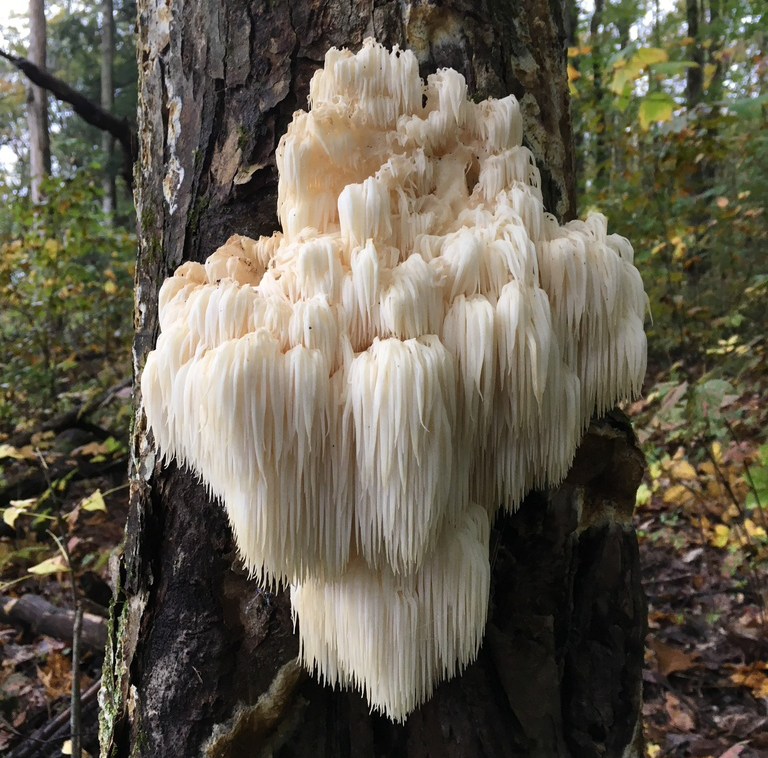What are you looking for?
Lion’s Mane
Lion’s Mane Mushroom
Scientific Name(s): Hericium erinaceus
Common Name(s): Bear’s head mushroom, Bearded hedgehog mushroom, Bearded tooth fungus/mushroom, Hog head fungus, Hou tou gu (Chinese), Lion’s mane mushroom, Monkey head mushroom, Old man’s beard mushroom, Pom pom mushroom, Satyr’s beard fungus, White beard mushroom, Yamabushitake (Japanese)
Use
Lion’s mane mushroom may possess neuroprotective effects, suggesting benefit in neurodegenerative disease as well as in the management of nerve injury. Antioxidant and anti-inflammatory activities have been demonstrated. However, clinical trials are lacking to support use of lion’s mane mushroom for any indication.
Few clinical studies have been reported in the literature. Lion’s mane mushrooms have been consumed in traditional folk medicine and medicinal cuisine. In clinical studies evaluating effects on cognitive function, the following dosages have been used: 750 mg/day of Yamabushitake (administered as a 250 mg tablet [containing 96% Yamabushitake dry powder] 3 times a day) for 16 weeks; H. erinaceus in tablet form was administered as 3 g/day for 16 weeks; and 5 g/day of the fruiting body was consumed in soup.
Increases Synthesis of Nerve Growth Factor
Lion’s mane provides nourishment for the brain, crossing the blood-brain barrier to directly support brain cells. Compounds called erinacines and hericenones are two major constituents of lion’s mane that are known to cross the blood-brain barrier and stimulate Nerve Growth Factor (NGF).[3][4][5]
NGF is a natural peptide produced in the body that’s essential to the growth, maintenance, and survival of nerve cells. NGF helps create new brain cells, strengthen old ones, and promote brain plasticity, important to brain development and repair. Lack of NGF is considered a contributing cause of certain neurological problems such as Alzheimer’s and dementia.
Numerous animal studies have investigated the potential mechanisms behind lion’s mane’s benefits for cognitive issues. One possible mechanism includes helping prevent beta-amyloid-related impairments of both short-term and recognition memory.[6]
Another animal study suggested that use of lion’s mane enhanced concentrations of both acetylcholine (a neurotransmitter) and choline acetyltransferase (an enzyme) in both serum and hypothalamus levels in the brain.[7]
Neuroprotective
Lion’s mane has a wide variety of studies supporting its neuroprotective effects. Primary mechanisms are believed to be due to the antioxidant and anti-inflammatory effects of consuming this mushroom.
In animal studies, lion’s mane has shown protection against premature neuron cell death due to oxidative stress, inadequate oxygenation, and physical trauma. It has also been shown to help improve the neuron myelination processes, which are critical for proper nerve impulses.[8]
